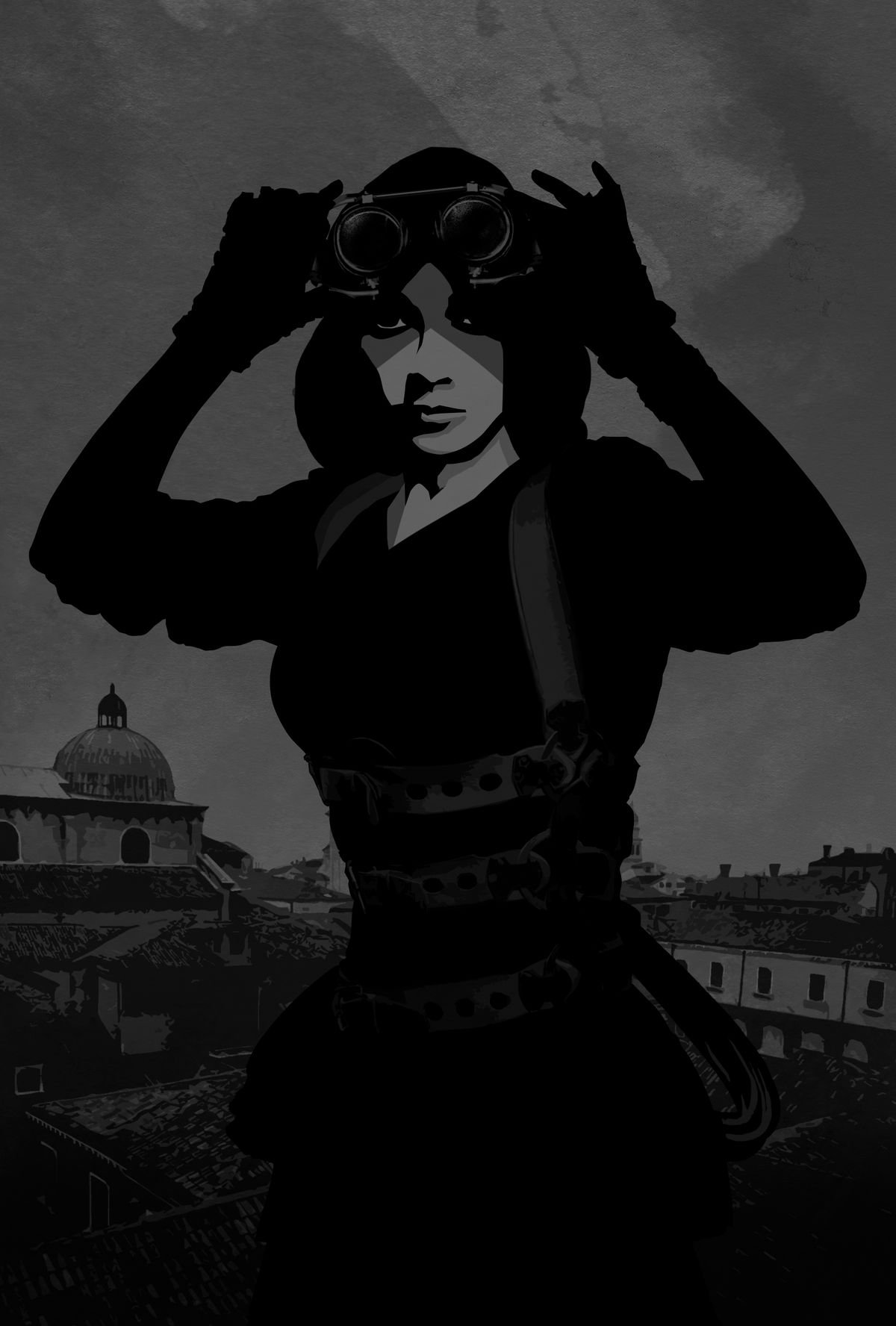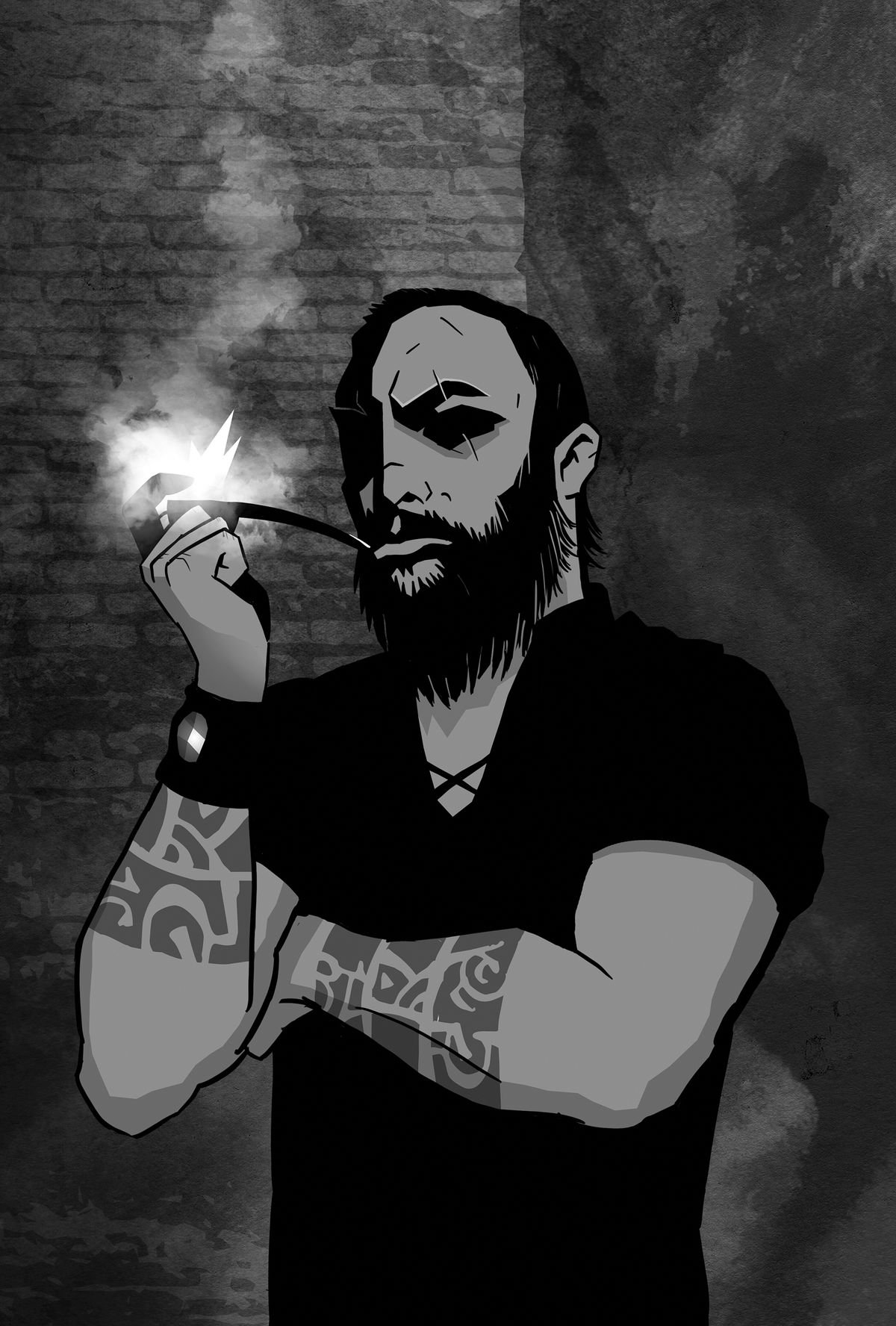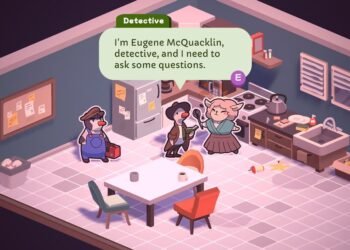Unlike the immensely popular Dungeons & Dragons, Blades in the Dark, an award-winning tabletop role-playing game, values speed and improvisation above all else. Sessions are less about thinking through every angle before rolling the dice. Instead, John Harper’s masterpiece rewards players for acting fast, breaking things, and figuring out how to get back out alive.
Blades sets its players up as criminal underdogs making their way in a world where the odds aren’t in their favor. The setting is a world called Doskvol, a haunted version of a gritty urban center during the Industrial Revolution where the dead can’t pass on.
This haunted Peaky Blinders setting blends perfectly with the game’s Ocean’s Eleven style adventures. Drug runs, assassinations, or slick heists, the choice is yours. To start with, GMs can think up ideas for their players to build up a gang’s notoriety or money. As soon as players start to get to grips with Doskvol, they can choose their aims, friends, and enemies in a bleak Victorian setting. It’s a unique, high-concept criminal playground.
Just be careful not to become one of the many ghosts that haunt this delightfully dangerous world.

Image: John Harper
Set into the landscape like a jewel in an ornate ring, the Bowmore mansion sat proudly above the slums of the docks. Black smoke billowed in the city below, but here you could almost forget the stench of the factories. Yet even here, there was no escaping the gloom that seeped into every pore of Doskvol. Nor could you shut out the eerie whispers from the ghost field protecting the lonely city from the spectres beyond.
The dead stayed put, refusing to move on since the sun died and the world was plunged into darkness. Doskvol should be a haven, but instead it was the only Hell the dead were now welcome to.
Hiram Balkus, leader of the Dark Phantoms, surveyed the area with a quick eye and an even faster mind. What he lacked in physical presence, he more than made up for with a sharp intellect and a ruthless efficiency. But there was always more work to be done.
“We need a way in.” He said, his gaze drawn to the two guards checking guest passes at the door.
“Oh, that,” Zamira, his second-in-command and yin to his yang, laughed, a wicked smile on her slight face. “Already dealt with. We’re on the guest list.”

Image: John Harper
The 327-page rulebook gives players permission to invent their own solutions on the fly to problems that they encounter at the table. It’s less about having the right skills at the right time, and more about using the world that you’ve created around you as the motivation for in-fiction inspiration. Want to get into that fancy party but don’t know how? Flash back to earlier that day and play out a scene where you try to bribe a guard to put you on the guest list. A fight breaks out and you need an edge? Just wave your hand at the game master, drop some dice on the table, and pull out those brass knuckles you packed earlier in the day.
Keeping track of your group’s history becomes part of the game, organically building the narrative with every encounter. Blades is episodic, with players embarking on just one ‘score’ — or heist — each session. And sessions tick along at a fairly quick pace. That inertia keeps players on their toes as they are forced to tackle the ever increasing amount of obstacles that come their way.
Every choice is decided on the roll of a normal six-sided die. This does away with things like armor classes, hit points and all the other paraphernalia less streamlined games use that take you out of the moment. The better a player is at something — like skirmishing, picking pockets, or communing with the dead — the more dice they can roll and the more likely they are to succeed.
That said, only rolling a six lets you do what you said you wanted to do without an unforeseen complication, which isn’t a bad thing. It turns every roll of the dice into a shared moment at the table, an opportunity to add color and detail to your adventures.


Image: John Harper
“I thought you said we were on the list,” Harim whispered, as the guard he’d just proudly announced himself to looked at him as though he belonged in the river.
“Yeah, well, clearly I was wrong,” Zamira bit back hotly. “That’s Zamira with a ‘Z’,” she said loudly to the guard point at his clipboard.
Eyes back on the paper, Zamira pulled out a small bottle from her pocket. Dread clawed at Harim’s heart. A bloody spirit bottle, that’s all he needed.
“Run,” Zamira grinned, dashing the bottle on the ground. A high-pitched, otherworldly scream pierced the air as the shimmering image of a young woman, her throat slashed and her eyes sunken, burst up from the floor. The guards scrambled, guests shrieked and, unnoticed, Zamira and Harim slipped by and into the relative calm of the mansion.

Image: John Harper
It sounds odd, but failing in Blades is almost more fun than succeeding. It creates a frenetic type of tension as you watch your plan unravel and have to run to keep ahead. Failing to persuade a guard from checking out that weird noise they heard, which definitely wasn’t your friend trying to break into a safe, has a unique rush to it. The varying scale of failure built into the game lets failure actually become enjoyable.
Any rolls below a six result in a minor, major, or complete failure. The manual has some suggestions on what to do, including harming players physically, creating clocks which act as countdowns to an event — usually guards being alerted to your presence — or adding ‘heat’ to your gang, which makes Doskvol’s police more interested in you.
On the whole, GMs live just as in the moment as their players. Planning ahead can help, but because players are constantly walking on a knife edge their plans, just like a GM’s, can go flying out the window at a moment’s notice. It helps to just embrace the chaos and it stops GMs from chairing sessions that drag on and on as your players fight to become the biggest gang in Doskvol.
Which is no mean feat. The gangs are ruthless, each with their motivations, specializations, and history. Of all of them, the Dimmer Sisters, an occult group of sisters who live in a ghost-filled mansion, is perhaps the scariest. Their mansion is described as the one place no-one has ever returned from, so going up against them is to be avoided unless you’re ready for some messed-up horror.
Your players’ decisions matter, far more than you might realise at first. Becoming friends with one gang could upset another, to the point that they come looking for you and bring the fight to your front door. A lot is done in the background, giving GMs free reign to develop the world around their players. Weirdly, the admin is part of the fun and after every session you’ll be left imagining the various ripples of your players’ choices.
For GMs, it’s like being a spider at the centre of a web. Players are the flies stuck in that web, each choice is a movement that sends potentially devastating shockwaves through it. No matter how small, every decision can come back to haunt you thanks to the gang system at the heart of Blades in the Dark.
You can find Blades in the Dark at your friendly local game store, online via storefronts like Amazon and DriveThruRPG, and directly from the Evil Hat Productions storefront. No matter where you buy your copy, you’re entitled to a PDF version of that material via the Bits and Mortar program.
Blades in the Dark was reviewed with a physical copy purchased at retail. Vox Media has affiliate partnerships. These do not influence editorial content, though Vox Media may earn commissions for products purchased via affiliate links. You can find additional information about Polygon’s ethics policy here.
Blades in the Dark accessories
Blades in the Dark was originally released in 2017, and went on to win multiple game of the year awards. The community that surrounds it is still very active and healthy, and there are tons of great gaming aids to supplement the source material. Here are our top picks:
























































